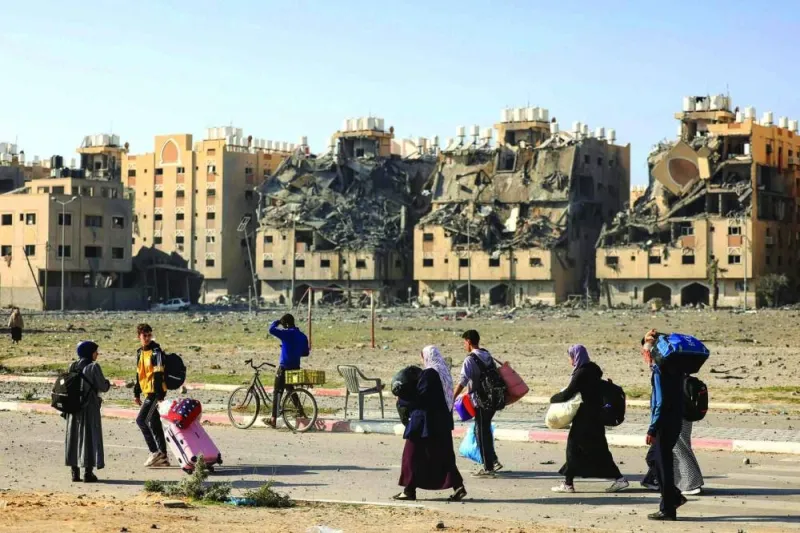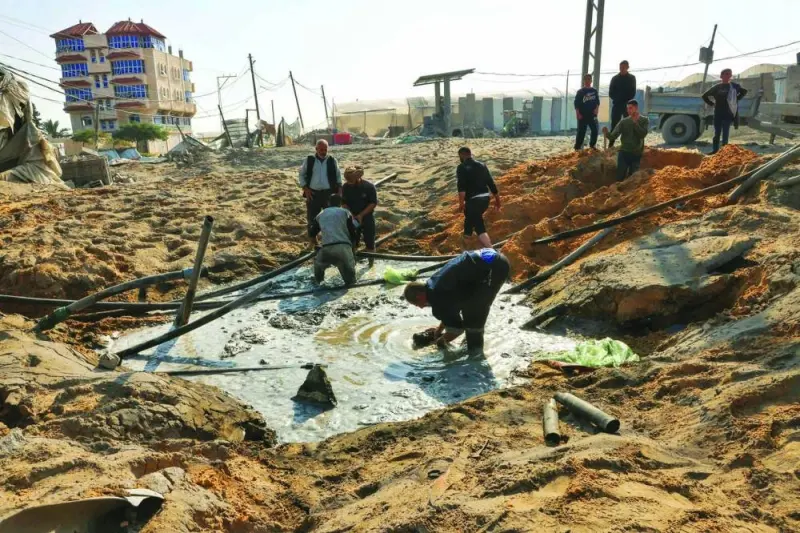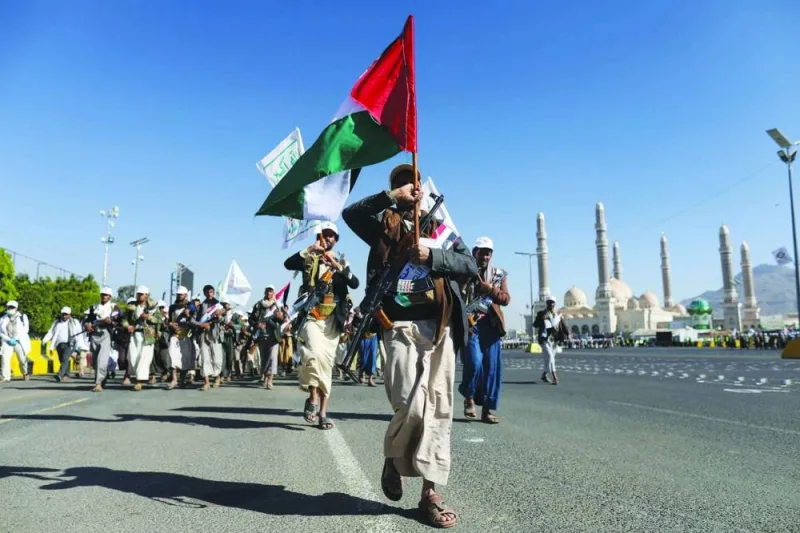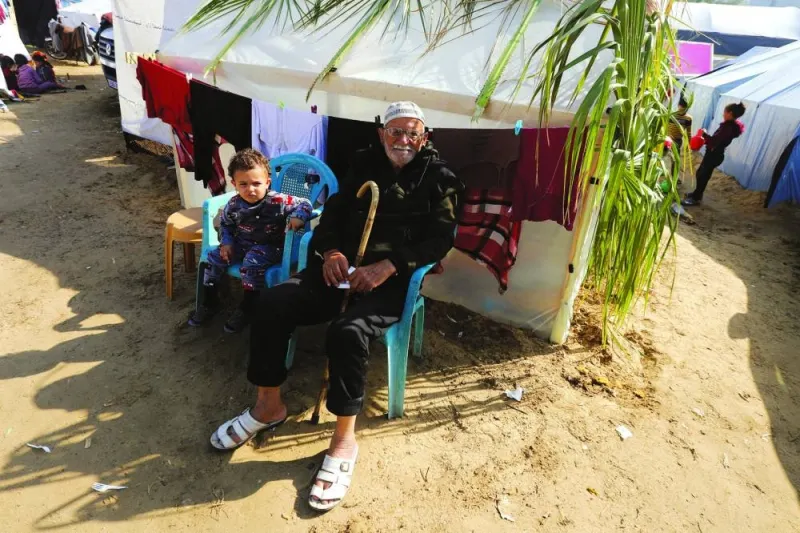Under aerial bombardment from Israel, people sheltering in the south of the Gaza Strip after fleeing their homes earlier in the war said yesterday they had nowhere safe to go now.
The city of Khan Yunis is the focus of Israeli air strikes and artillery fire after fighting resumed on Friday following the collapse of a week-long truce. Its population has swelled in recent weeks as several hundred thousand people from the northern Gaza Strip have fled south.
Some are camping in tents, others in schools. Some are sleeping in stairwells or outside the few hospitals operating in the city. A World Health Organisation official said on Friday that one of the hospitals was “like a horror movie” as hundreds of wounded children and adults waited for treatment.
Abu Wael Nasrallah, 80, scoffed at the Israeli army’s latest order to move further south to Rafah, bordering Egypt. Children were injured in Israeli strikes in the town on Friday.
The message was delivered via leaflets dropped from the sky over several districts of Khan Yunis.
“This is nonsense,” Nasrallah told Reuters. He had heeded Israeli evacuation orders and moved from the northern Gaza Strip earlier in the war that broke out in the first week of October when Hamas fighters stormed into Israel.
Some 193 Palestinians had been killed since the truce expired, the Gaza health ministry said yesterday, adding to the death toll of more than 15,000 Gazans announced by Palestinian health authorities.
Israel says it is making efforts to prevent civilian casualties as the fighting moves south. Addressing reporters in Tel Aviv yesterday, a senior adviser to Israeli Prime Minister Benjamin Netanyahu said humanitarian groups were informed of what he described the “safer areas”.
“We’ve not asked the whole population of the south to relocate, we’ve not even asked the whole population of Khan Yunis to relocate. But those neighbourhoods, those specific areas where we know there is going to be heavy combat, we’ve asked people there to relocate,” Mark Regev said.
But Nasrallah and his family would stay put because they had already lost everything.
“There is nothing left to fear. Our homes are gone, our property is gone, our money is gone, our sons have been killed, some are handicapped. What is left to cry for?”
A mother of four, who gave her name as Samira, said she had fled south from Gaza City with her children after Israel began bombing there last month. They now shelter with friends in a home west of Khan Yunis.
She said Friday night had been one of the most terrifying since she arrived: “A night of horror.” She and other residents said they feared the intensity of the bombing in Khan Yunis and the nearby city of Deir al-Balah meant Israel’s ground invasion of the south was imminent.
Another man, who gave his name as Yamen, said he and his wife and six children had fled the north weeks ago and were sleeping in a school.
“Where to after Deir al-Balah, after Khan Yunis?” he said. “I don’t know where to take my family.” The UN estimates that up to 1.8mn people in the Gaza Strip — or nearly 80% of the population — have been forced to flee during Israel’s devastating bombing campaign.

Residents of the Hamad Town residential complex in Khan Yunis in the southern Gaza Strip, carry some of their belongings as they flee their homes after an Israeli strike, yesterday.

Palestinian workers repair a damaged water pipe following an Israeli airstrike on the main road between Rafah and Khan Yunis on the
southern Gaza Strip, yesterday.

Newly recruited fighters who joined a Houthi military force intended to be sent to fight in support of the Palestinians in the Gaza Strip, march during a parade in Sanaa, Yemen, yesterday.

Displaced Palestinian man Abu Wael Nasrallah sits next to his grandchild near their tent where they take shelter, as the conflict between Israel and Hamas continues, at Nasser hospital in Khan Yunis, in the southern Gaza Strip, yesterday.
